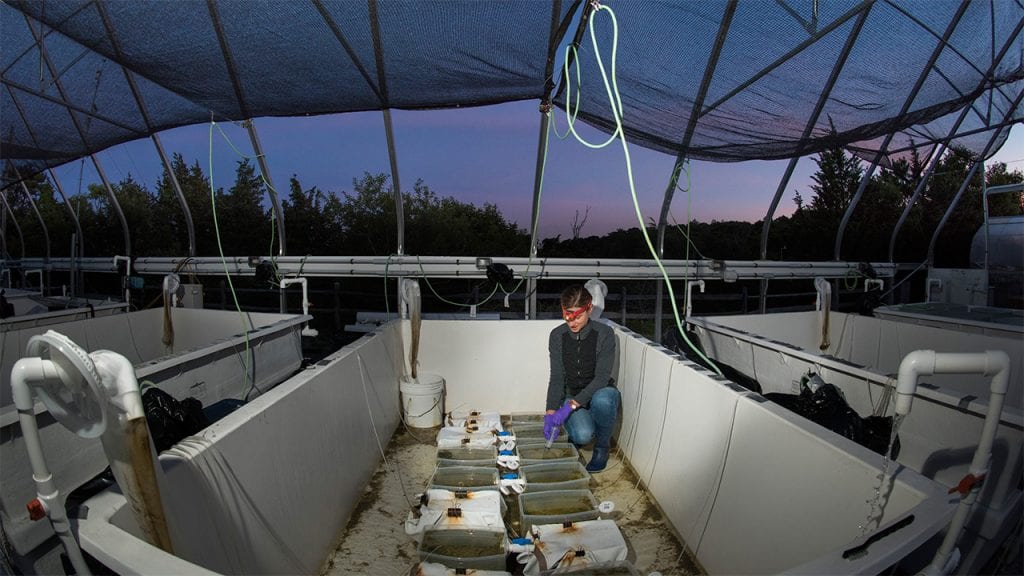Each year, virtually all the marsh grass in coastal wetlands dies, but very little plant material remains buried in sediments. Understanding where this organic matter goes is an important part of the coastal carbon and nitrogen cycles: it literally keeps WHOI biogeochemist Amanda Spivak up at night. This summer, Spivak and her team conducted a round-the clock experiment at the Mesocosm Lab to replicate the process occurring in marshes. The experiment tracked carbon and nitrogen as they were buried in the sediments and cycled between bacteria and photosynthetic algae, or were lost to the water and flushed out of the system.(Photo by Tom Kleindinst, Woods Hole Oceanographic Institution)
Image and Visual Licensing
WHOI copyright digital assets (stills and video) on this website can be licensed for non-commercial use upon request and approval. Please submit your request via our Media Request Form.
For assistance or accessibility accommodations, call (508) 289-2647.
